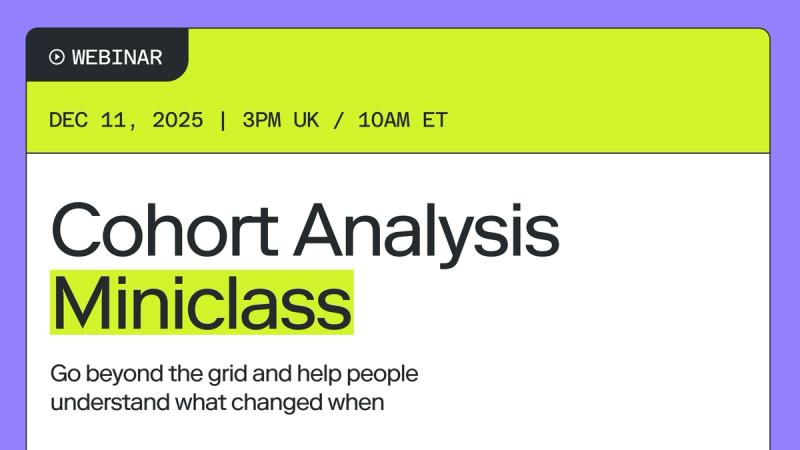Cohort Analysis Miniclass
Go beyond that grid and help people understand what changed when

About this webinar
Cohort analysis has a reputation problem.
Everyone knows they should be using it. Everyone recognizes that color-coded grid when they see it. But most people think it's either (a) only for tracking user retention and churn, or (b) more complicated than it's worth.
Both wrong!
Cohort analysis is brilliantly simple—technically, you're just grouping things by when they started and watching what happens over time. And it's useful for way more than signups: pricing changes, support interventions, staggered feature rollouts, operational shifts, seasonal patterns… anywhere you need to understand if a change actually changed anything.
The real challenge isn't building it. It's knowing when to reach for it, and then presenting it so stakeholders actually understand what they're looking at instead of nodding politely at your shaded grid.
In this miniclass (truly mini—we're keeping it tight), we'll cover:
- When cohort analysis is the answer — beyond retention and churn, what problems does this actually solve?
- How to build one that matters — choosing cohorts, metrics, and time windows that answer real questions
- Making it explorable, not just presentable — why interactive cohort analysis beats static charts every time, and how to turn yours into a story people can navigate themselves
We'll build a cohort analysis live in Count so you can see how quickly it comes together, and how the collaborative canvas turns "here's a grid" into "let's explore what happened together."
Who should tune in?
- Data analysts who feel like cohort analysis should be in their regular toolkit but hasn't quite clicked yet. You'll leave ready to use it confidently next week.
- Marketing and product teams (data-savvy or data-interested) who want to understand whether their changes are working. You'll leave knowing when to ask for cohort analysis and how to actually read one.
- Anyone who's ever presented a cohort chart and watched eyes glaze over. You'll leave with a better way to tell the story.